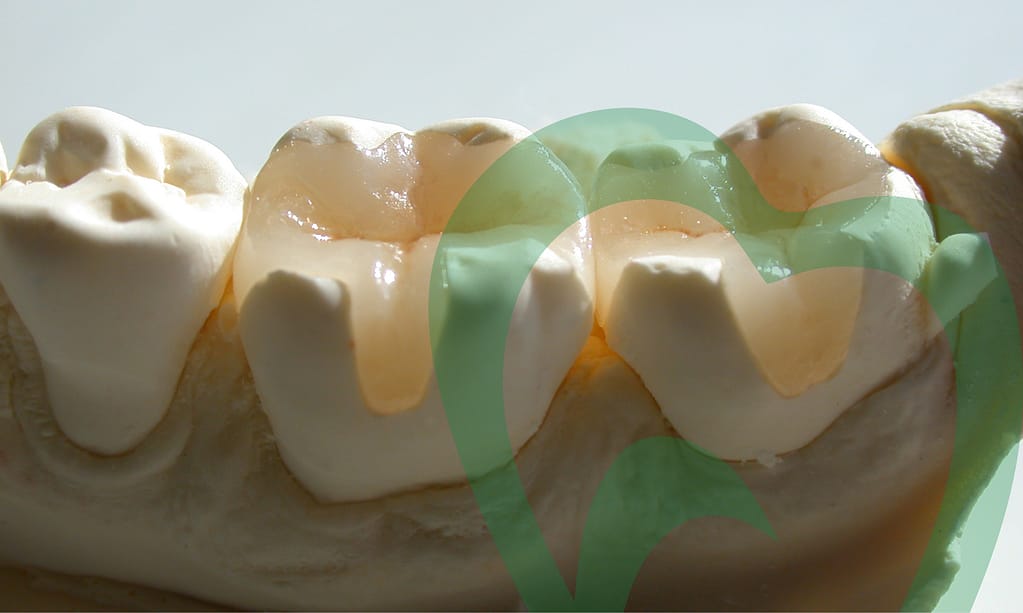What Are Inlays and Onlays? Here’s the Inside Scoop!

Understanding Inlays and Onlays
Inlays and onlays are both dental restorations often used in cosmetic dentistry to help fix a tooth that is damaged or broken. They are an excellent choice when you need something more than a filling but don’t need the full coverage of a dental crown.
Whether a dentist chooses an inlay or an onlay depends on the extent and location of the damage. Dental inlays address faults deep inside a tooth, while dental onlays repair damage located on the surface.
Understanding the differences between these two procedures is essential for ensuring your dental health. It may help you decide which restorations you want to proceed with to restore your smile.
Although they may seem similar, dental inlays and onlays are different procedures. They are both classified as indirect fillings. The main difference is how much of the chewing surface each covers.
Dental Inlays
An inlay fits into the grooves on the tooth’s chewing surface. It does not cover any of the bumps on the tooth, called cusps. Sometimes, it can be used interchangeably with a filling. However, an inlay is often used on more extensively decayed teeth. Both require removing the cavity and placing a material, but how the space is filled separates them.
When you get a silver or white filling, the material is placed directly into the space. It’s a faster process and requires only one visit. An inlay is a single, solid restoration, typically made from gold or ceramic in a dental lab. After the inlay is fabricated, it must be cemented into place.
Dental Onlays
An onlay is more extensive than an inlay, but not as major as a dental crown. Onlays cover at least one cusp but may involve more. Decay must still be removed from the tooth and replaced with a solid gold or ceramic restoration. With a dental crown, more tooth structure must be removed to place the restoration.
Benefits of Inlays and Onlays
Inlays and onlays have several benefits for your oral health compared to traditional fillings and crowns.
Durability
Because they are made from durable materials like ceramic, inlays and onlays can withstand years of wear and tear. With proper care, they might never need replacing.
Conservative Approach
Some restorations require the removal of a lot of the natural tooth structure. Inlays and onlays preserve as much of the healthy tooth as possible and fit directly into the prepared space.
Natural Appearance
These custom-made restorations can match the color and shape of the tooth being restored. This customization creates a more natural-looking restoration. It helps to improve your smile’s appearance, making it a suitable choice for a smile makeover.
Indications for Inlays and Onlays
Indirect fillings are suitable when a tooth lands in the middle ground—too damaged for a traditional filling, but not quite severe enough for a crown. This type of problem can occur from one of several causes, including:
- Cavities
- Chipped or cracked teeth
- Clenching and grinding
These problems are more than simple cosmetic issues; they can also affect the function of your teeth, particularly chewing and biting. To restore your teeth, your dentist may recommend an inlay or onlay.
The Procedure
There are several steps necessary for placing an inlay or onlay. At the first appointment, your dentist must remove the portion of the tooth that isn’t healthy. They do this using the same tools employed in a standard filling.
After the prep work is complete, an impression is taken. It can be done digitally or using traditional putty-like materials. You’ll decide with your dentist the material and shade you want, and a temporary material will be applied over the prepared tooth while you wait for the final restoration.
The dental lab creates your custom restoration using a mold made from the impressions and sends it back to your dentist. The temporary restoration gets removed at the second appointment, and the inlay or onlay is test-fitted and adjusted to create a perfect fit. It gets bonded to the tooth with a resin and polished to create a smooth finish.
Which restoration type applies to you?
There are many benefits to receiving this type of restoration compared to traditional fillings. Inlays and onlays are both reliable methods for restoring your tooth’s natural appearance and function.
Your dentist will determine which option is necessary for your unique situation. It largely depends on how much healthy tooth remains. Both will give you a beautiful, long-lasting restoration that preserves your dental health and restores your smile.
Let the Tooth Doc Help
Consult with an experienced dentist in Omaha, Nebraska, to learn more about whether an inlay or onlay is the right solution for you. Contact The Tooth Doc to book an appointment and discuss your options.